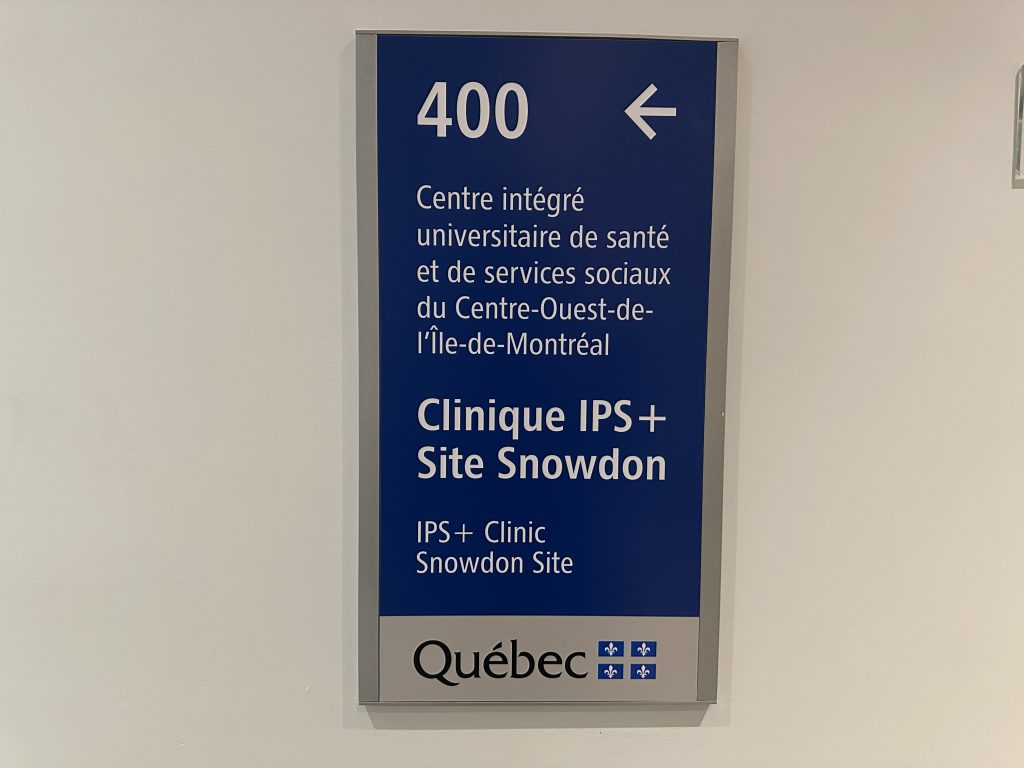‘Game changer’: Montreal clinic breaks language barriers with virtual interpretation service

Posted March 31, 2025 7:04 pm.
Last Updated March 31, 2025 10:53 pm.
With one of the most diverse neighbourhoods in Montreal, IPS+ Snowdon Clinic serves a variety of clients.
The centre is working to help those whose first language isn’t English or French.
To bridge the communication gap, they launched a virtual interpretation service that helps patients and doctors connect more effectively.

The service is provided by Voyce. It offers on-demand medical interpretation and allows clinicians to connect with patients in under 25 seconds in more than 240 languages.
“This is particularly useful for our allophone patients on our territory since we do serve one of the most diverse populations within the island of Montreal,” said Aurelia Di Fabrizio, associate director – transformation, value, flow, and virtual care.
Di Fabrizio says it very much affects the quality of care for their patients if they cannot communicate effectively with their clinical care teams.
“It was really important to us to be able to put in place a service that they could communicate, ensure efficient care, effective care, and the quality of care.”

The service is accessible and can be used on any type of phone, whether it’s Android or iPhone, as well as on tablets and computers.
“The clinician just puts in their information, selects a language, and within about 20 to 25 seconds, it’ll connect them to the language of their choice that they select. Then they’ll just speak with the interpreters, who are medically trained, hang up the call, and let them know if they’re satisfied with that call and the device, and that’s it,” Di Fabrizio explained.
Muneeb Khan is a physiotherapist at the IPS+ Snowdon Clinic, who says Voyce is a very helpful and important part of their practice.
“We happen to have quite a number of patients who don’t speak English or French as their primary language. So, Voyce is something that I use on a very regular basis, and it makes life super easy in terms of actually being able to provide care. Sometimes, you know, you hit so many different barriers when it comes to trying to provide care for any type of population. So, just being able to remove at least language as a barrier is very, very helpful,” he said.

He says everyone should be able to get healthcare in a language that is comfortable for them because otherwise, you start missing details.
“When people have to express themselves in a language that maybe not is their primary language, it can lead to issues in care, missing details, not being able to help them maybe as well as we would like to be able to help them.”
“I’m in physio, so I’m dealing more with pain and function and that type of thing, but especially on the more medical side, those little details can be very, very important. So, to be able to get all of that information accurately is a game changer in terms of being able to help these people.”
Khan explained that while he doesn’t use the service with every patient, it varies day-by-day, with some days using it for a majority of patients and other days for just a few. Still, it remains a regular part of his practice.
“There are days where if I’m seeing 10 patients that day, I’ll use it on like six or seven. There are days where I might use it like on two or three. It is a pretty regular part of my practice.”
Since it was implemented, Di Fabrizio says that the response has been positive, with about a 95 per cent satisfaction rate across the thousands of calls made since its implementation. They’ve also seen higher access.
“Within healthcare, we can have appointments that are late, appointments that are cancelled. So, given that it’s on demand, we can just select that interpreter as needed. That access aspect is really important, and we’ve seen some important monetary savings as well across the network,” she said.
Khan agrees saying that having a translation service, like Voyce, is a game changer, as it allows them to effectively communicate with patients who don’t speak English or French, making sessions possible that otherwise wouldn’t be.
“In the past, you know, in other settings I’ve worked in, I’ve had to use like Google Translate, I’ve had to use other types of services that kind of get the job done. But to have someone on the line on the other end who speaks the primary language and can do a much better job of picking up on the nuance that sometimes the computer or AI or Google can’t do is very, very helpful.”
The service was first piloted at the CLSC in Park Extension two years ago, where the highest volume of patients could not speak English or French. Following its success, the service expanded to 40 different services within their health network and continues to grow.
“With the monetary savings that we’ve had so far from implementing a voice compared to the old model, we’ve actually been able to reinvest in the service. So, we’re now implementing it in the emergency department at the Jewish General Hospital, where they did not have prior access to this type of service,” said Di Fabrizio.
“I’m very happy to see this type of service get the recognition that it deserves for this population. I think everyone deserves to be able to communicate effectively with their care teams. And I can’t imagine what it would be like to not communicate with my doctor when I needed help. So, very happy to see that everything is going so well.”








